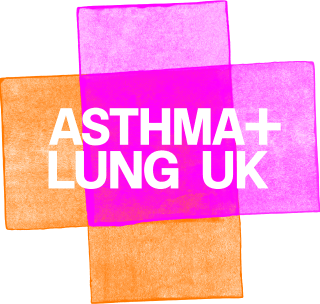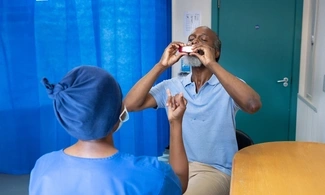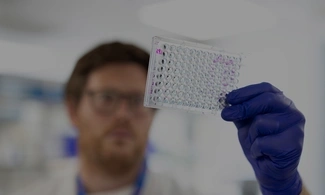How do you pronounce bronchiectasis?
Bronchiectasis is pronounced brong-kee-EK-tuh-siss.
What is bronchiectasis in children?
Bronchiectasis is a long-term condition that affects the airways in your child’s lungs.
If your child has bronchiectasis, it means that the airways in their lungs are damaged and widened. Because their airways are widened, phlegm (sputum) can build up in them. This can increase their risk of getting infections as it makes it easier for bacteria to get trapped in their airways.
Is bronchiectasis common in children?
Bronchiectasis is rare in children. It’s estimated that less than 1 in every 100,000 children have bronchiectasis.
What causes bronchiectasis in children?
Severe infections can cause bronchiectasis. Your child might have had a very severe case of an infection, for example:
Other causes of bronchiectasis in children
There are other causes of bronchiectasis, including if your child has:
- another lung condition, for example, asthma or cystic fibrosis
- problems with tiny hair-like structures in their lungs (cilia). This could be caused by conditions like primary ciliary dyskinesia (PCD) or Young’s syndrome
- a weaker immune system (immunodeficiency)
- inflammatory bowel disease, including Crohn’s disease and ulcerative colitis
- connective tissue disorders, like rheumatoid arthritis
- accidentally breathing in food or drink into their airways instead of swallowing it (aspiration).
Signs and symptoms of bronchiectasis in children
The most common sign of bronchiectasis in children is a cough. Their cough might sound wet or they might cough up phlegm. If your child has had a cough for more than three weeks, see their GP.
Other symptoms of bronchiectasis in children include:
- repeated chest infections
- asthma symptoms that do not get better with treatment
- being more breathless than usual after exercise or physical activity.
Preparing for your child’s GP appointment
To prepare for your child’s appointment you could keep a symptom diary to track their symptoms. Show this to their GP to help them understand what your child is going through.
We have advice to help you get a GP appointment for your child.
Why is getting my child diagnosed with bronchiectasis important?
The earlier your child is diagnosed with bronchiectasis, the sooner they can get treatment. Treating bronchiectasis properly can:
- improve your child’s quality of life
- reduce how often your child gets sick or needs to go to hospital with their bronchiectasis
- in some mild cases, reverse your child’s bronchiectasis.
Diagnosing bronchiectasis in children
Your child’s GP will ask about their symptoms and medical history. This will help them to work out if your child has bronchiectasis or if a different condition could be causing their symptoms.
If your child’s GP thinks they have bronchiectasis, they’ll arrange a high-resolution computed tomography (HRCT) scan to take images of the inside of your child’s lungs. This is also called a CT scan.
CT scans use X-rays to take detailed pictures of your child’s lungs. Your child will lie down on a bed and a machine will move around them and scan their chest. CT scans are quick and will not hurt your child.
Cambridge University Hospitals has more advice about CT scans for children.
Other tests your child might need
Your child might need some other tests to confirm their diagnosis. The exact tests are different for each child. Your child might have:
| Phlegm sample | Your child’s healthcare professional will ask your child to cough up phlegm into a pot. Then they’ll test this to see if there’s bacteria or fungi in their phlegm. |
| Blood tests |
This is to check how well your child’s immune system is working. Their healthcare professional will also check if there‘s bacteria, viruses or fungi in their blood. We have more information about blood tests. |
| Spirometry |
This test checks how well your child’s lungs are functioning. This will also help to rule out other conditions that could be causing their symptoms. We have more information about spirometry. |
| Bronchoscopy |
A bronchoscopy will be used to see if there are any problems inside your child’s lungs. They’ll also take samples from their lungs for testing. Great Ormond Street Hospital has more information about bronchoscopy in children. |
| Tests for other conditions |
Your child might need tests to rule out other health conditions, for example: |
Getting your test results
Your healthcare professional should explain what the test results mean.
Never be afraid to ask questions or let your child’s healthcare professional know that you do not understand something. They’re there to help you. The NHS has more advice about what to ask healthcare professionals.
Treating and managing bronchiectasis in children
Will my child’s bronchiectasis go away?
Sometimes mild bronchiectasis can be reversed in children with the right treatment. Reversed means that the damage in their airways will go away or get a lot better.
Some scientific studies suggest that mild bronchiectasis can be reversed in around 6 in 10 children. But every case of bronchiectasis is different.
Whether your child’s bronchiectasis can be reversed depends on:
- when they were diagnosed with bronchiectasis
- what caused their bronchiectasis
- how their bronchiectasis is being treated.
If your child’s bronchiectasis cannot be reversed, it can usually be controlled with the right treatment. This means it will impact them less.
Bronchiectasis affects each child differently, so speaking to your child’s healthcare professional is the best way to understand more about their condition.
Airway clearance
Airway clearance exercises (a type of physiotherapy) are the main treatment for bronchiectasis in children. They’re breathing exercises that can help your child to get rid of their phlegm and breathe better.
After your child is diagnosed with bronchiectasis, they should see a respiratory physiotherapist at least twice a year. Their respiratory physiotherapist will teach them airway clearance techniques.
There’s lots of different types of airway clearance exercises. Your child’s respiratory physiotherapist will teach your child the best exercises for them. They’ll also explain when and how often they should do them.
Self-management plan
A bronchiectasis self-management plan helps your child to manage and understand their condition, with guidance and support from their healthcare professionals. It should support them to find ways to manage their symptoms better and live well with bronchiectasis.
A bronchiectasis self-management plan keeps important information about your child’s condition in one place, including:
- everyday advice to manage their condition
- how to spot and treat flare-ups
- when to see their healthcare professional
- what the colour of their phlegm (sputum) means.
Using a bronchiectasis self-management plan can also help your child recognise early symptoms of flare-ups and treat them quickly.
Managing your child’s condition is easier when you’re supported by other people.
After making your child’s plan with their healthcare professional, share it with your GP, respiratory nurse or anybody else involved in their care. It may also help to discuss your plan with your child’s family, friends and teachers, so they can support your child too.
The Children's Bronchiectasis, Education, Advocacy and Research Network has a self-management plan template on their website.
Other things you can do to look after your child with bronchiectasis:
- Contact a healthcare professional straight away if your child is unwell, if any of their bronchiectasis symptoms change, or if they get new symptoms.
- Make sure your child has any vaccines they’re eligible for to protect them from infections. The NHS has more advice about children’s vaccines.
- Encourage your child to stay active and eat a balanced diet.
- Do not smoke or let anyone else smoke or vape around your child. Being exposed to second-hand smoke increases your child’s risk of getting infections.
Treating a bronchiectasis flare-up in children
A flare-up is when your child’s usual bronchiectasis symptoms get worse for three or more days. The medical name for a flare-up is exacerbation.
Flare-ups are usually caused by bacterial infections, like a chest or lung infection. Your child’s healthcare professional might also call them infective exacerbations.
If your child has a flare-up caused by a bacterial infection, they’ll be given antibiotics. Your child will usually have to take these for 14 days.
Before prescribing antibiotics, your child’s healthcare professional should take a sample of their phlegm. They test this to check what’s causing your child’s flare-up and prescribe them the best antibiotics.
If your child keeps getting flare-ups or has gone to hospital because of a flare-up, their healthcare professional might recommend that they take long-term antibiotics. Taking a smaller dose of antibiotics every day for six months or more can help to prevent the infections that can cause flare-ups.
Call 999 if:
- your child’s skin, lips, tongue, gums, ears or nails turns pale, blue or grey. On black or brown skin this may be easier to see on the palms of the hands, soles of the feet, lips, gums and inside the eyelids
- they’re struggling to breathe or they’re breathing fast
- they have a high temperature (a fever, 38 degrees Celuis or above)
- they’re coughing up blood
- they’re confused.
We have more advice about when to call 999 about your child’s breathing.
Support for parents
Looking after a child with a long-term condition like bronchiectasis can be difficult. It’s important you take time to take care of yourself, as well as your child. There’s help available:
- You can also always call our helpline. They can help answer any questions or worries you have, or just have a chat.
- You could also join our online lung condition support forum and connect with people that have similar experiences to you.
- The Children's Bronchiectasis, Education, Advocacy and Research Network is an international collaboration aiming to improve the care and clinical outcomes of children with bronchiectasis. They have more support and advice for children with bronchiectasis.

Get support
Call our helpline for support with your condition. Get advice on your medicines, symptoms or travelling with a lung condition, or just call us to say hello.








